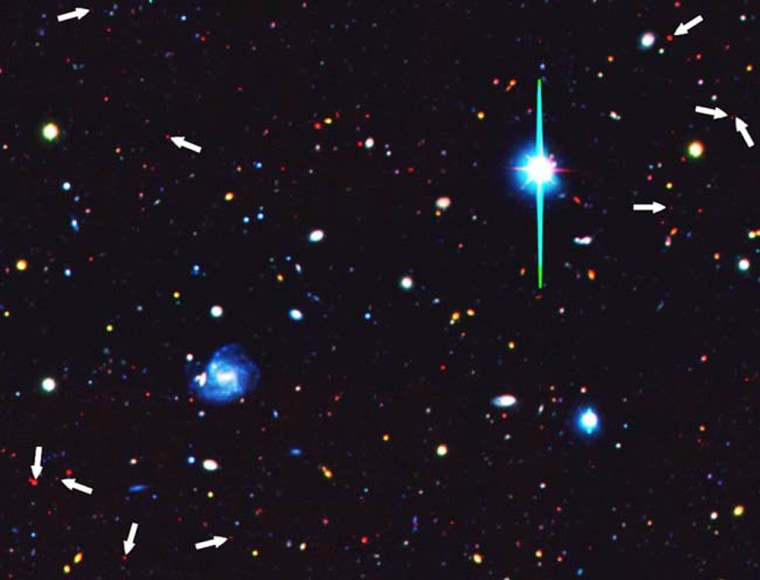When scientists peer at distant galaxies, it's like looking back in time because their light has taken so long to reach us. Recently, two groups of astronomers were able to see two classes of unique galaxies from the early universe.
One group glimpsed galaxies that looked old even when the universe was young, suggesting they must have been some of the first galaxies to form after the birth of the universe. The other group found galaxies dating from the strongest burst of star formation in the universe.
The former set of galaxies seem to have reached an advanced stage of life even as the universe was in its infancy.
"They're already kind of dying," said Will Hartley, a Ph.D. student at the University of Nottingham in the U.K. who led the team that discovered them. "They've mostly finished forming stars."
Hartley will discuss his findings at the Royal Astronomical Society's National Astronomy Meeting in Belfast on today.
Quick work
The galaxies give away their elderly and inactive status by their reddish color, indicative of old stars. The astronomers saw them as they were 4 billion years after the Big Bang.
"It is a puzzle and a challenge for us to explain how these galaxies formed their stars so quickly that they are already dead galaxies when we observe them," Hartley told Space.com.
Slideshow 12 photos
Month in Space: January 2014
The scientists think the objects must have been among the very first galaxies born in our universe. They would have formed from the few clumps of higher density stuff in the mostly smooth spread of matter at the time. Therefore, they were more massive than the average galaxies that formed later, so they probably remain as some of the largest galaxies around today.
Another group of scientists, led by Scott Chapman of the Institute of Astronomy in Cambridge, U.K., discovered galaxies likely undergoing tremendous bouts of star formation.
"Here we've maybe discovered a population of galaxies that is very, very vigorously forming stars, but maybe for a short period of time," said Frank Bertoldi, an astronomer at the Max-Planck Institute for Radio Astronomy in Germany who worked on the study.
The scientists think these galaxies form stars at more moderate rates most of the time, but happen to be in a rare period of extreme star creation.
"Maybe only ten percent of their lives are they in such a state of high star formation," Bertoldi said.
Collisions to blame
These bouts of extreme star production are likely triggered by collisions with other galaxies that stir up the galaxies' gas. Galaxies collided more often at this early stage because the universe was smaller, so they were more crowded together. More recently, the universe has been expanding, space is getting emptier and collisions happen less frequently.
The astronomers saw these prolific galaxies as they were 3 billion years after the Big Bang, offering a view of the early epochs of star formation in the universe.
These galaxies had been missed by previous searches for similar galaxies that favored the discovery of slightly colder galaxies.
"This is one class of objects, a particular phase in evolution, that has been missed so far," Bertoldi said. "We hadn't discovered them because we had a bias in our selection."
The scientists hope to find more galaxies like these to better understand the dynamics of rapid star formation in the early universe.
Chapman will also present the group's findings today at the National Astronomy Meeting.

